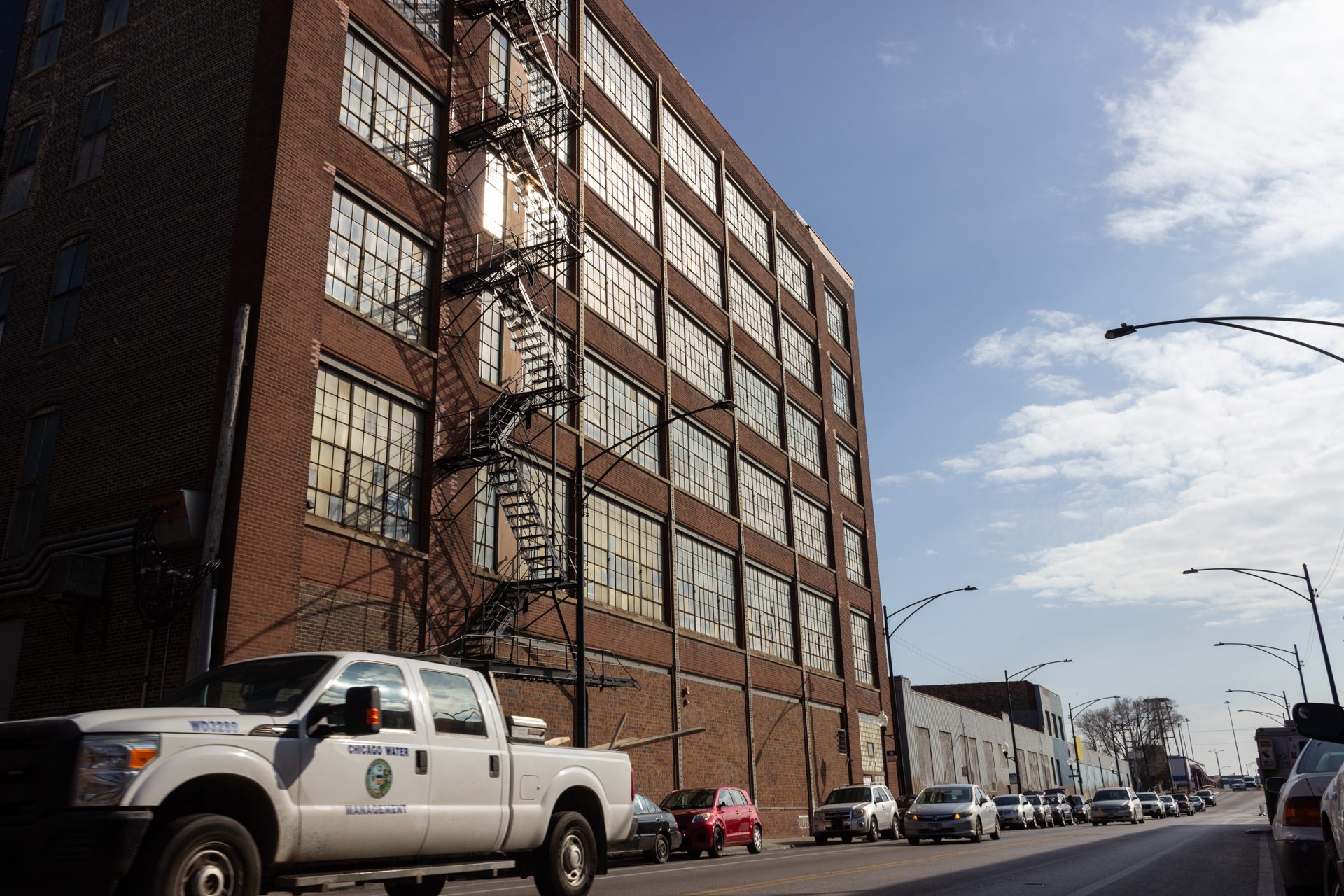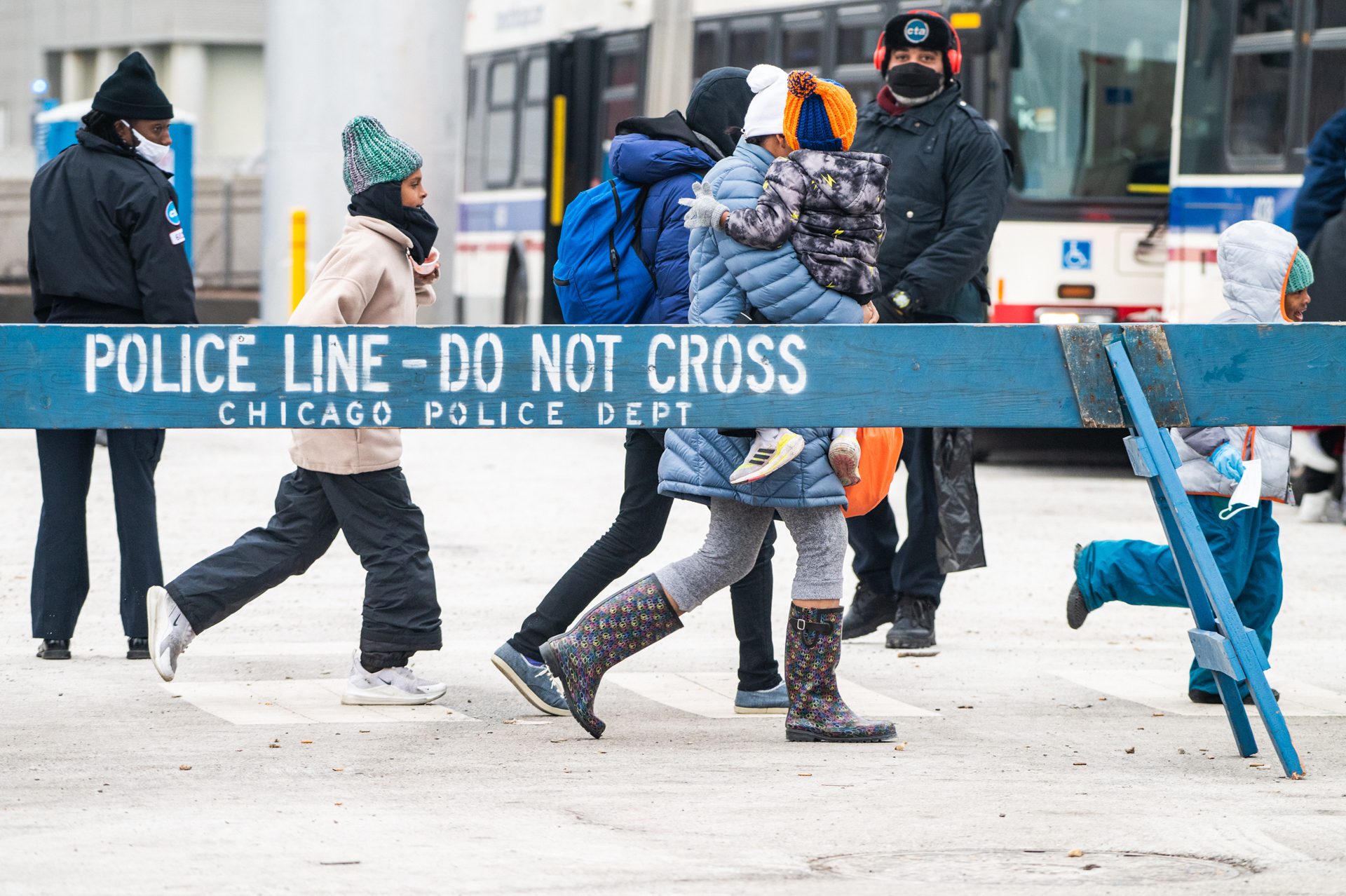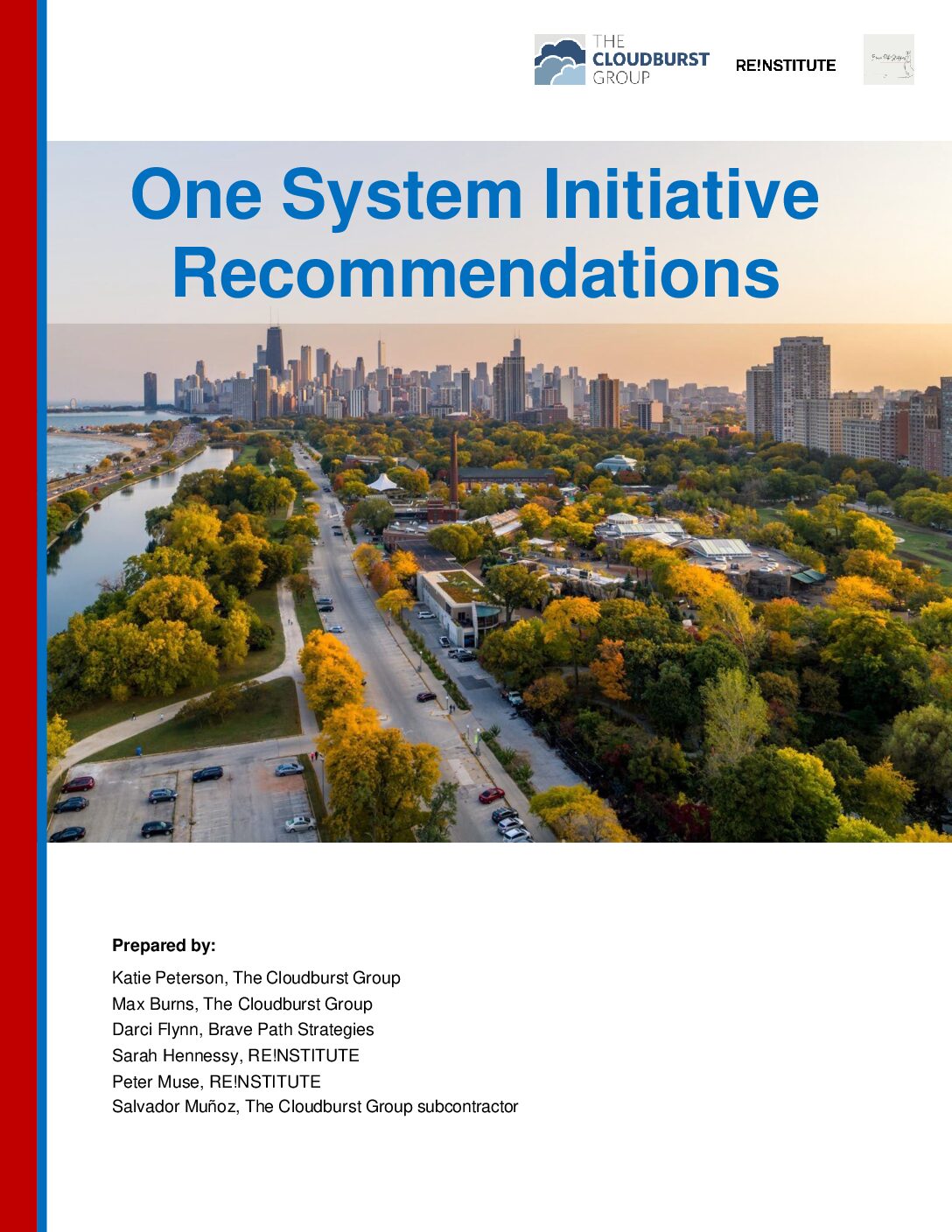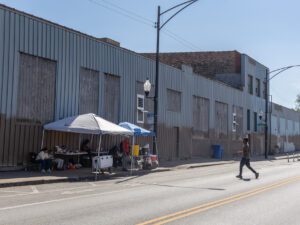 Mauricio Peña/Borderless Magazine
Mauricio Peña/Borderless MagazineFuncionarios municipales y estatales presentaron recomendaciones para la "Iniciativa de un solo sistema", que incluiría una zona de acogida accesible todos los días del año para cualquier persona sin hogar.
La ciudad de Chicago acaba de presentar un informe que ofrece orientaciones sobre cómo podría combinar su política de personas sin hogar y de sistemas de acogida de inmigrantes.
El informe, titulado "One System Initiative Recommendations" (Recomendaciones para la iniciativa de un sistema único), esboza una serie de sugerencias para que la ciudad y el estado las tengan en cuenta a medida que avanzan en el proceso de planificación de un sistema combinado de albergues para inmigrantes y personas sin hogar. Entre las recomendaciones, la ciudad podría crear una zona de admisión disponible para los necesitados a todas horas.
El informe, que constituye la primera fase de los sistemas de refugio combinados, fue elaborado por agencias consultoras con aportaciones de decenas de organizaciones comunitarias y organismos gubernamentales.
¿Quiere recibir historias como ésta en su bandeja de entrada todas las semanas?
Suscríbase a nuestro boletín gratuito.

"La ciudad y el estado reconocen que las personas con experiencia y las organizaciones comunitarias que trabajan o interactúan con el sistema de servicios para personas sin hogar y el sistema de recién llegados tienen una visión muy valiosa y, por lo tanto, les han pedido que proporcionen recomendaciones para trabajar por un sistema unificado", dijo Daisy Contreras, subdirectora de comunicaciones del Departamento de Servicios Humanos de Illinois.
Borderless ha elaborado este documento explicativo para ayudarle a entender la Iniciativa de Sistema Único y lo que podría venir después en su aplicación.
¿Qué es la iniciativa "Un sistema"?
La iniciativa "One System" se refiere al esfuerzo de la ciudad de Chicago y el estado de Illinois por combinar los sistemas de acogida de inmigrantes y personas sin hogar de Chicago.
A mediados de septiembre, la ciudad publicó un informe de 23 páginas con recomendaciones sobre cómo debería ser el sistema único.
El informe se elaboró con las aportaciones de grupos de trabajo formados por más de 45 proveedores locales de servicios sociales de inmigración y líderes comunitarios que atienden a personas sin hogar. Algunos de ellos son:
- Coalición de Illinois para los Derechos de Inmigrantes y Refugiados
- Iglesia Bautista Misionera Cornerstone
- Junta Vecinal de Brighton Park
- Mujeres Latinas en Acción
- Nueva vida
- Ejército de Salvación
- Organización de África Unida
¿Qué recomendaciones se propusieron para la Iniciativa "Un Sistema"?
El informe hacía más de una docena de recomendaciones, entre ellas que la ciudad congelara el número de camas de acogida disponibles para los recién llegados y las personas sin hogar y creara una zona de admisión disponible 24 horas al día, 365 días al año, para cualquier persona que pudiera necesitar acceder a un refugio.
Otras recomendaciones son:
- Desarrollar el seguimiento en tiempo real de la disponibilidad de camas
- Establecer un punto de acceso virtual eficaz y oportuno para todas las poblaciones que sufren la falta de hogar y la inestabilidad de la vivienda.
- Establecer un proceso de priorización de camas de acogida
- Crear una estrategia de desarrollo de la mano de obra y seguridad económica que apoye a las personas que sufren inestabilidad en la vivienda y carecen de hogar.
- Crear un Fondo de Incentivos y Mitigación de Riesgos para los Arrendadores
Lea el informe completo haciendo clic en el siguiente archivo:
¿Cómo podría cambiar esto los actuales sistemas de acogida de inmigrantes y personas sin hogar?
El informe recomienda dos cambios principales: poner todas las camas de acogida financiadas por la ciudad a disposición de cualquier persona sin hogar y crear un lugar físico que sirva de zona de admisión para las personas que necesiten una cama de acogida disponible las 24 horas del día, los 365 días del año.
Con el sistema actual, los inmigrantes pueden alojarse en los albergues para personas sin hogar de la ciudad, pero las personas sin hogar no pueden alojarse en un albergue para inmigrantes, según el informe.
A finales de junio, había unas 3.000 camas de acogida en el sistema de albergues para personas sin hogar y 11.000 camas de acogida para recién llegados. El informe propone mantener el número total de camas en 14.000 hasta que se realicen más evaluaciones para determinar el número de camas necesarias para satisfacer las necesidades de la comunidad de personas sin hogar de Chicago.
El informe señalaba que, debido al "limitado número de camas de acogida" actualmente disponibles en el sistema de respuesta a los sin techo de Chicago, casi dos de cada tres personas que solicitan una cama de acogida en Chicago no pueden acceder a una a través de la ciudad.
Históricamente, las personas sin hogar tienen que llamar al 311 o acudir al Centro de Servicios Comunitarios de Garfield para solicitar una cama en un albergue. Ese proceso planteó barreras para las personas sin hogar, ya que las personas citaron "dificultad para conectarse a un refugio y procesos inconsistentes que se les dijo en función de donde inicialmente tratan de acceder a los servicios", señala el informe.

Ha existido un sistema similar para la admisión en los albergues de inmigrantes, en el que los recién llegados acuden a la Zona de Aterrizaje o al Centro de Admisión de la ciudad para ser ubicados en uno de los albergues de inmigrantes de la ciudad.
El informe recomienda unir estos dos sistemas de admisión y crear al menos "un punto de acceso con pocas barreras que esté disponible 24 horas al día, 7 días a la semana y 365 días al año, donde los residentes puedan satisfacer sus necesidades básicas, ser evaluados para su derivación y colocación en refugios, y buscar refugio cuando haya cama(s) disponible(s)".
¿Quién es responsable de la iniciativa "Un sistema"?
La iniciativa "One System" es una colaboración entre la ciudad de Chicago y el estado de Illinois. Entre los departamentos municipales y estatales que participan en esta iniciativa figuran:
- Departamento de Servicios Humanos de Illinois (IDHS)
- Oficina del Gobernador de Illinois
- Oficina del Alcalde de Chicago
- Departamento de Servicios Familiares y de Apoyo de Chicago (DFSS)
- Oficina de Illinois para Prevenir y Erradicar la Falta de Vivienda (IOPEH)
Parte de la financiación de la iniciativa procede de la Oficina de Illinois para Prevenir y Acabar con la Falta de Vivienda.
¿Cuándo empezaré a ver cambios en los sistemas de acogida de inmigrantes y personas sin hogar de la ciudad?
El proceso, que consta de varias fases, está aún en sus inicios. El siguiente paso es que la ciudad y el estado tomen esas recomendaciones y formulen un plan de acción oficial para los sistemas de refugios unificados.
Aún no se ha establecido un calendario, un plan de financiación ni la aprobación del presupuesto, dijo Contreras.
"Queremos señalar que el Estado y la Ciudad funcionan cada uno sobre la base de un año fiscal, con presupuestos anuales aprobados y que cubren cada año fiscal", dijo Contreras.
Katrina Pham es la reportera de audiencia de Borderless Magazine. Envíe un correo electrónico a Katrina a katrina@borderlessmag.org.


